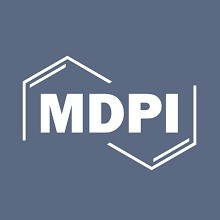
مقاله انگلیسی توسعه یادگیری الکترونیکی براساس اینترنت اشیا و فناوری بلاک چین
Abstract
Keywords
Introduction
Literature Review
Proposed Method
Performance Assessment
References
Abstract
The suspension of institutions around the world in early 2020 due to the COVID-19 virus did not stop the learning process. E-learning concepts and digital technologies enable students to learn from a safe distance while continuing their educational pursuits. Currently, the Internet of Things (IoT) is one of the most rapidly increasing technologies in today’s digital world; and e-learning is one of the most powerful learning methods available. In today’s world, smart devices and new technologies assist teachers in concentrating on new models of student learning while avoiding time wastage. By examining the characteristics of the Internet of Things and the challenges that exist in the field of e-learning, the potential functions, benefits, and advancements of utilizing the Internet of Things in online education are identified and discussed. This article examines the existing and future condition of the Internet of Things world as it pertains to the topic of education and sophisticated capabilities available through the Internet of Things that enable the application of e-learning after an architecture has been designed. Students’ pulse rates, brain waves, and skin resistance are measured in real time by a collection of IoT sensors, including cameras, microphones, and wearable gadgets. By utilizing the proposed architecture, universities can change their distance learning tactics to maximize resources and boost efficiency without changing their overall academic activities. According to the study’s findings, e-learning has a favorable and statistically significant impact on students’ flexibility, learning experience, educational productivity, and overall quality of education.
Introduction
The World Health Organization has identified COVID-19 as a global epidemic with adverse consequences in many parts of society [1,2]. Despite the tragic events of COVID-19, the exceptional circumstances created a new platform that led to the development of elearning and digital education [3]. The disease outbreak has halted educational processes at the graduate level, leading to poor exam results and negatively impacting students’ future employment. Update models were implemented for educational systems in countries [4]As a result of the rapid expansion of new educational technologies over the past few years and the emergence of a revolution in this field, new technologies have emerged as one of the most important and memorable components of the educational process [5]. When it comes to designing teaching methods and learning outcomes, these technologies have a lot of potential [6]. On the other hand, e-learning uses modern technology to access educational programs available on the Internet [7].
